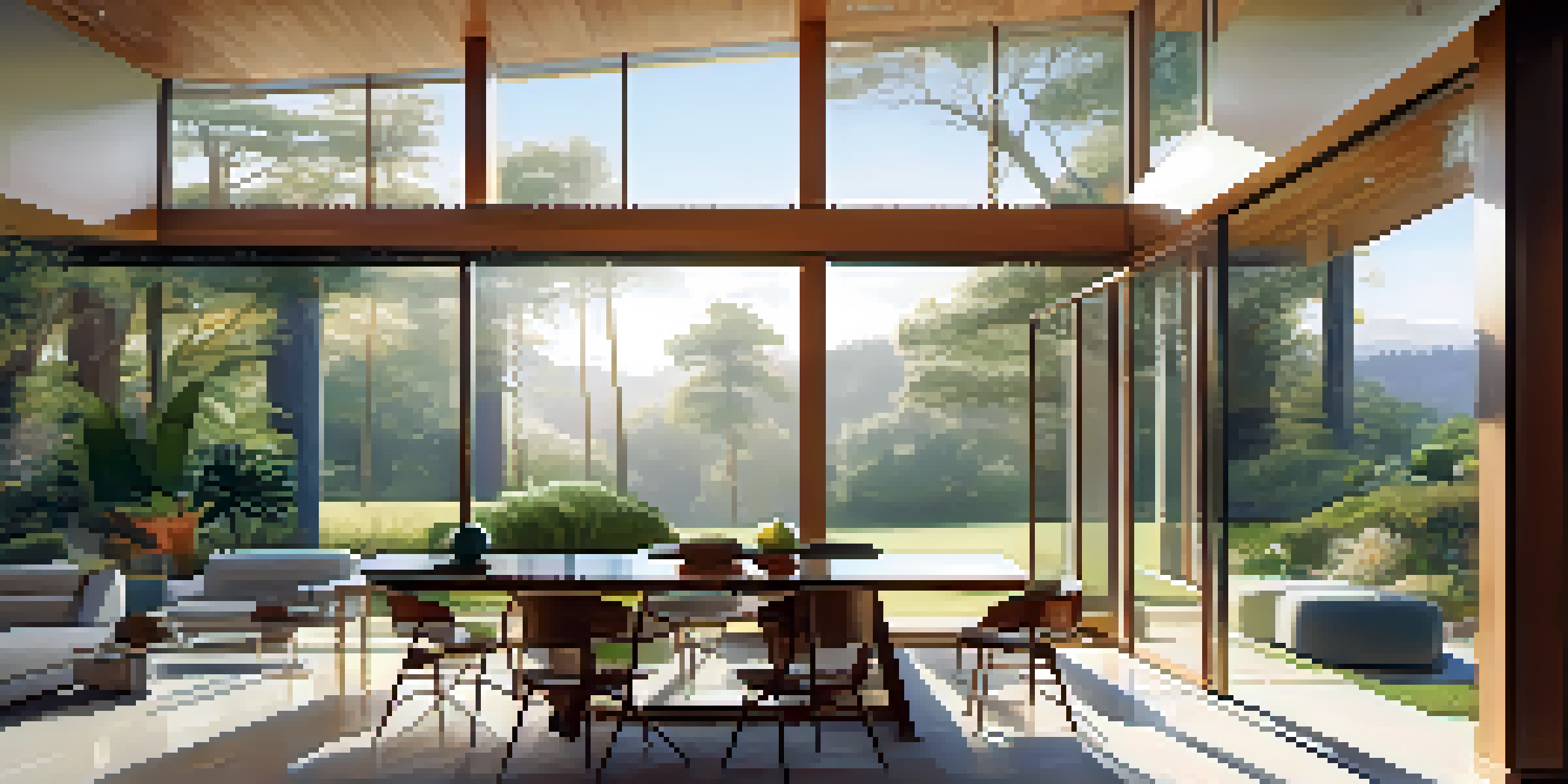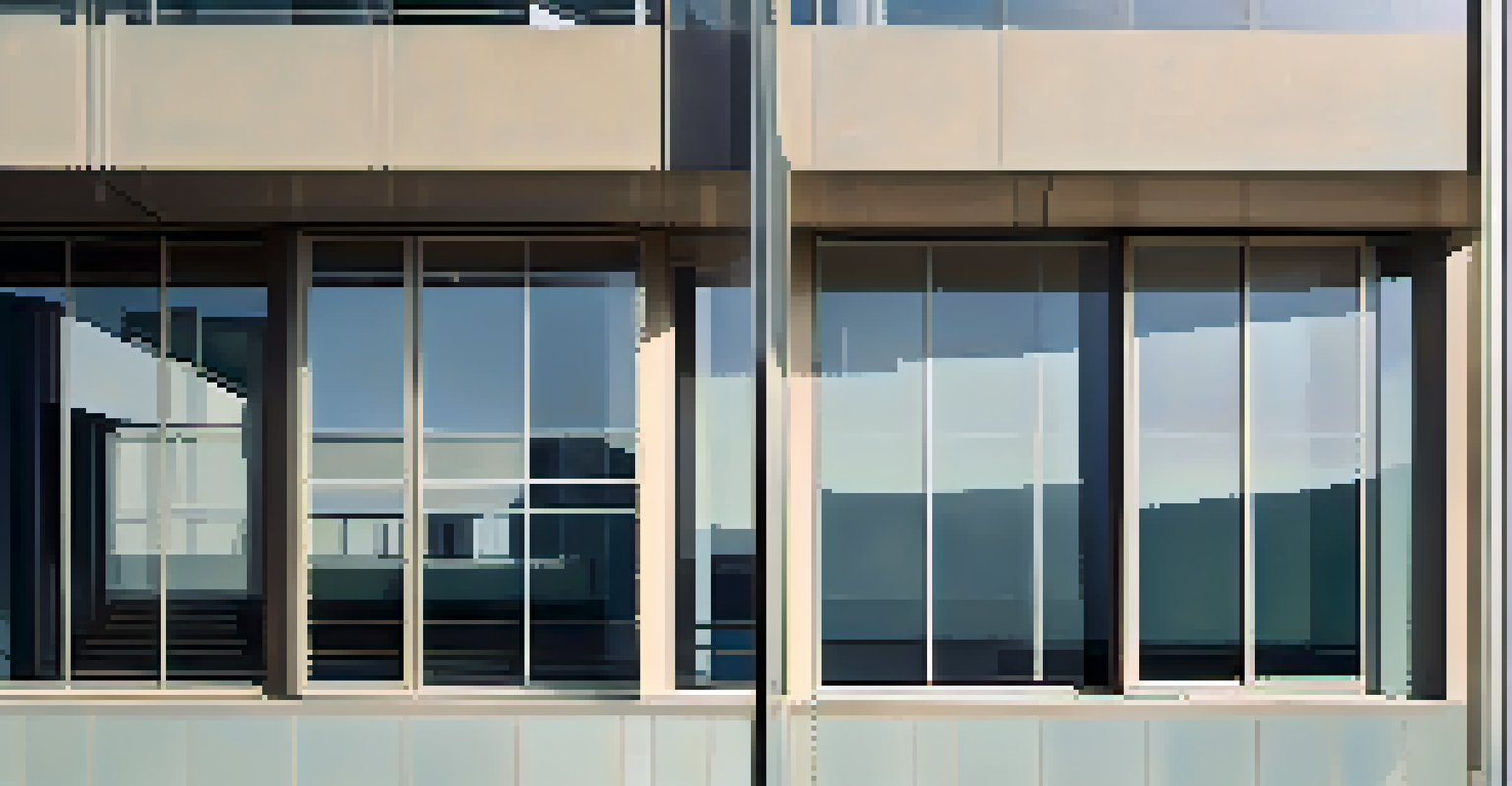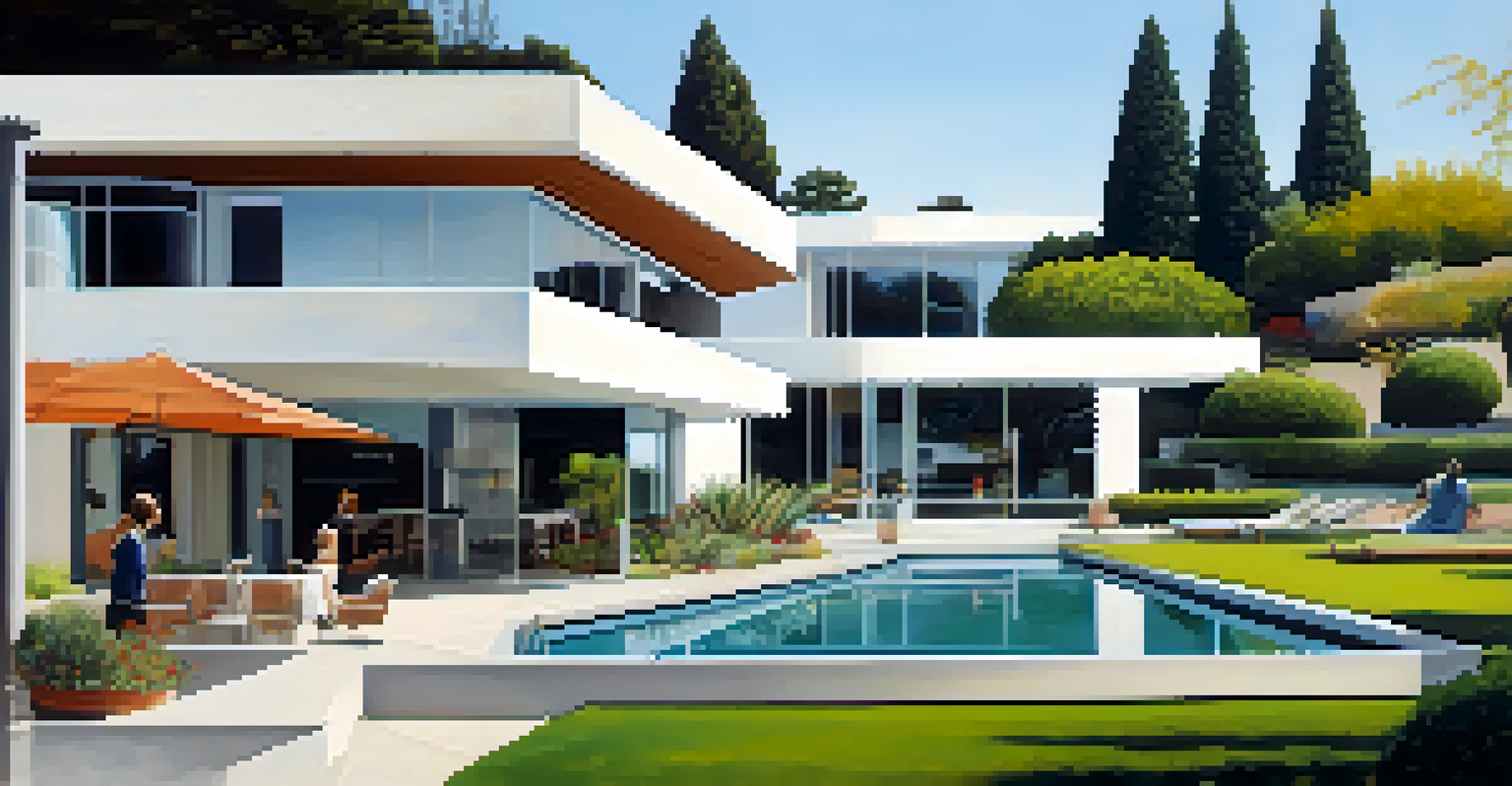The Role of the International Style in California Architecture

Introduction to the International Style in Architecture
The International Style emerged in the early 20th century, characterized by minimalism and functionality. It revolutionized architectural design, favoring clean lines and open spaces over ornate details. This style was not just about aesthetics; it reflected a broader cultural shift towards modernism and industrialization, setting the stage for a new way of living.
Less is more.
In California, the International Style found a fertile ground for growth and experimentation. The state's diverse landscape and progressive spirit attracted architects eager to break away from traditional forms. As a result, many iconic buildings began to emerge, showcasing the principles of the International Style in innovative ways.
This architectural movement encouraged a dialogue between the environment and the structures themselves. Buildings were designed to integrate seamlessly with their surroundings, promoting harmony and sustainability. Such principles would play a crucial role in shaping California's architectural identity.
Key Characteristics of the International Style
One of the hallmark features of the International Style is its emphasis on simplicity. Architects stripped away unnecessary ornamentation, focusing instead on functionality and form. This minimalist approach often resulted in geometric shapes and flat surfaces, creating a sense of purity in design.

Another defining characteristic is the use of new materials such as steel and glass. These materials allowed for expansive windows and open spaces, fostering a sense of connection between the interior and the exterior. This transparency was revolutionary, as it transformed how people interacted with their environments.
Simplicity and Functionality Defined
The International Style emphasized minimalism and practicality, revolutionizing architectural design with clean lines and open spaces.
The International Style also embraced the concept of a 'form follows function.' This principle suggests that the shape of a building should be primarily based on its intended function rather than aesthetic considerations. This ideology resonated deeply with California's evolving urban landscape, where practicality and modernity were essential.
Prominent Architects Influencing California's Landscape
Several architects played a pivotal role in popularizing the International Style in California. Richard Neutra, for example, became renowned for his ability to harmonize buildings with their natural surroundings. His designs often featured open floor plans and large windows that invited the outdoors in, embodying the essence of California living.
Architecture is the learned game, correct and magnificent, of forms assembled in the light.
Similarly, Rudolph Schindler made significant contributions, particularly with his Kings Road House in West Hollywood. This structure showcased how the International Style could adapt to residential needs while maintaining its core principles. Schindler's work emphasized innovative spatial arrangements that catered to modern lifestyles.
In addition, architects like Gregory Ain and Charles and Ray Eames contributed to the movement, each infusing their unique perspectives into their designs. Their collective efforts not only advanced the International Style but also laid the groundwork for future architectural trends in California.
The Influence of Climate on California Architecture
California's unique climate significantly influenced the application of the International Style. With its mild weather and abundant sunshine, architects could design homes that embraced outdoor living. Large windows and open spaces became not just aesthetic choices, but practical responses to the environment.
The emphasis on natural light and ventilation was particularly important in California. Buildings were often oriented to maximize sunlight while minimizing heat gain, reflecting a thoughtful approach to energy efficiency. This consideration of the local climate enhanced the livability of these structures.
Climate Influenced Architectural Choices
California's mild climate shaped the application of the International Style, encouraging designs that embraced natural light and outdoor living.
Moreover, the connection to nature became a hallmark of California architecture during this period. Many homes featured terraces and gardens that blurred the lines between indoor and outdoor spaces, creating an inviting atmosphere. This relationship with the environment is a testament to the International Style's adaptability.
Cultural Shifts and the International Style
The rise of the International Style in California coincided with significant cultural shifts in society. As post-war prosperity took hold, there was a growing desire for modern living spaces that reflected contemporary values. The International Style offered a fresh perspective, aligning perfectly with these aspirations.
This movement also paralleled the rise of the middle class, who sought homes that embodied modernity and progress. The clean lines and functional designs of International Style buildings resonated with these homeowners, who appreciated the blend of form and function. It was a style that promised a better future.
Furthermore, the International Style began to influence not just residential architecture but also commercial and institutional buildings. Schools, offices, and public spaces adopted these principles, leading to a cohesive architectural language that defined California's urban landscapes. This widespread adoption underscored the style's impact on societal values.
Legacy of the International Style in Modern Architecture
The legacy of the International Style continues to shape modern architecture in California. Today, architects draw inspiration from its principles, blending them with contemporary design elements. The emphasis on sustainability and integration with the environment remains at the forefront of architectural practice.
Many contemporary buildings pay homage to the International Style while addressing modern challenges. For instance, eco-friendly materials and energy-efficient technologies have become standard, reflecting a commitment to sustainability. This evolution demonstrates how the core values of the International Style remain relevant.
Cultural Shifts and Modern Aspirations
The rise of the International Style coincided with post-war prosperity, reflecting the modern values and desires of a growing middle class.
Moreover, the International Style's influence can be seen in California's urban planning. The focus on open spaces and community interaction has become a guiding principle in many new developments. As cities grow and evolve, the impact of this architectural movement will undoubtedly continue to be felt.
Conclusion: The Enduring Impact of the International Style
In conclusion, the International Style has had a profound and lasting impact on California architecture. Its principles of simplicity, functionality, and harmony with nature have shaped the way we think about design. As we look at the skyline of cities like Los Angeles and San Francisco, we can see the traces of this influential movement.
The adaptability of the International Style has allowed it to thrive across generations, influencing not just architecture but the broader cultural landscape. Its emphasis on modernity and practicality resonates with contemporary values, making it a timeless reference point for architects today.

As we move forward, it's essential to acknowledge and celebrate the role of the International Style in defining California's architectural identity. Its legacy will continue to inspire future generations of architects, ensuring that the conversation around form, function, and environment remains vibrant and relevant.